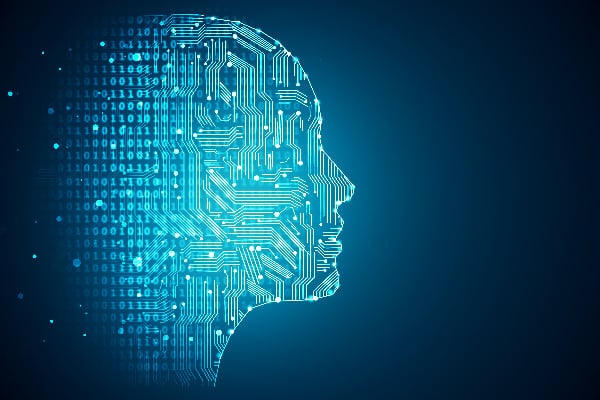Published on
AI’s True Face in Higher Education: 10 Myths Shattered

Artificial Intelligence (AI) is knocking on the doors of colleges and universities worldwide, promising a revolution in how we teach, learn and conduct research. But as with any transformative technology, misconceptions abound. Let’s roll up our sleeves and dig into ten persistent myths about AI in higher education, separating fact from fiction.
Myth 1: AI Will Make Human Educators Obsolete
Picture this: empty lecture halls with students learning solely from AI tutors. Scary, right? But it’s not reality.
AI excels at routine tasks like grading multiple-choice tests or answering common questions, which frees up educators to do what they do best: inspire critical thinking, guide complex discussions and mentor students. AI is more like a teaching assistant than a replacement.
In research, AI crunches data and spots patterns faster than any human, but it can’t ask the right questions or interpret results in context. The future of academia isn’t AI or humans; it’s AI and humans, working together.
Myth 2: AI Knows Everything About Every Subject
AI is smart, but it’s not all-knowing. Its knowledge comes from its training data, which can quickly become outdated, especially in fast-moving fields.
Imagine an AI trying to teach the latest quantum computing breakthroughs using last year’s textbooks. It wouldn’t work. Human experts are crucial for keeping content current and providing real-world context that AI might miss.
Myth 3: AI Is Too Complicated for Most Educators
Many educators hear “AI” and think they need a computer science degree to use it. Not true! Many AI tools are as user-friendly as your favorite apps.
The real challenge isn’t using AI but using it well. Institutions need to focus on training that goes beyond click-here instructions. The goal is to help educators understand how AI can enhance their teaching methods, not replace them.
Myth 4: AI Will Solve All Problems in Higher Education
AI is powerful, but it’s not a magic wand. It can’t fix budget shortfalls or outdated curricula with a wave of its digital hand. In fact, AI brings its own set of challenges.
Many institutions resist change, slowing AI adoption. Navigating privacy laws like FERPA in the U.S. or GDPR in Europe is tricky. For instance, how do you ensure AI-driven personalized learning doesn’t violate student privacy? There are ethical minefields too. Who’s responsible if an AI makes a biased decision? How do we ensure AI doesn’t widen existing educational gaps? And let’s not forget the headache of integrating AI with legacy systems, which can be like trying to fit a square peg in a round hole.
To tackle these challenges, institutions need clear AI governance frameworks. These should outline how AI will be used, who oversees it and how to address ethical concerns. It’s not just about having an AI policy; it’s about creating a culture that can adapt to AI’s rapid evolution.
Myth 5: AI Is Always Unbiased and Accurate
Ah, the myth of the infallible AI. In reality, AI can be as biased as the data on which we train it.
Consider an admissions AI system used, trained on historical data that reflects past biases in the selection process. Without careful oversight, this AI could perpetuate or even amplify these biases, disadvantaging certain groups of applicants.
To fight AI bias, institutions need diverse teams overseeing AI development and regular audits of AI systems. They should also be transparent about how AI makes decisions, allowing for human review and appeals.
Myth 6: AI Is Only for Wealthy Institutions
You don’t need a Silicon Valley budget to use AI effectively. Many affordable options exist, from cloud-based services to open-source tools.
Community colleges and small universities have successfully implemented AI chatbots to answer student questions 24/7, resulting in improved student satisfaction and reduced administrative burden. The key is starting small, focusing on high-impact areas and scaling up gradually.
Myth 7: AI Will Make Education One-Size-Fits-All
Far from standardizing education, AI has the potential to make it more diverse and inclusive than ever.
Imagine a classroom where each student gets personalized content based on their learning style, pace and interests. That’s what AI-powered adaptive learning systems can offer. These systems don’t just correct answers; they adapt their feedback based on each student’s progress and learning style. It’s like having a personal tutor for every student.
Myth 8: Implementing AI Is a One-and-Done Deal
Bringing AI into higher education isn’t like installing a new coffee machine. It’s an ongoing journey that requires constant evaluation and adjustment.
Successful institutions start small by implementing AI in a few courses, learn from the experience and gradually expand. They continuously refine their approach, adapting to new technologies and insights. The lesson? Start small, learn, adapt and grow.
Myth 9: AI-Generated Content Is Always Reliable
With AI language models becoming incredibly sophisticated, it’s tempting to trust their output implicitly. But beware—AI can produce content that sounds great but is factually nonsense.
There have been instances where AI-generated research summaries have fooled scientists by sounding plausible, despite being entirely fictitious. It’s a stark reminder that AI-generated content needs human verification.
In this AI age, critical thinking and fact-checking skills are more important than ever. We need to teach students not just how to use AI but how to question it.
Myth 10: AI Threatens Academic Integrity
There’s fear that AI will make cheating easier and harder to detect. But here’s the twist: AI is also getting better at catching cheaters.
More importantly, AI is pushing education to focus less on memorizing facts, which AI can easily provide, and more on applying knowledge creatively—something much harder to fake.
The future of education isn’t about outsmarting AI cheating tools. It’s about using AI to foster deeper learning and critical thinking skills that are uniquely human.
Looking Ahead: Embracing AI’s Potential
As we’ve seen, the reality of AI in higher education is far more nuanced than the myths suggest. But here’s the crucial point: The time to engage with AI is now.
Institutions that experiment with AI today will be better positioned to thrive tomorrow. Those that wait risk being left behind in an increasingly AI-driven world.
So, what can institutions do right now? They can start AI literacy programs for faculty and staff. Understanding AI is the first step to using it effectively. Identifying one area where AI could make a real difference—maybe in student support or research assistance—and running a small pilot project is a great way to begin. Creating an AI ethics committee to tackle the tough questions before they become real problems is crucial. Partnering with tech companies or other institutions to share knowledge and resources can accelerate progress. Most importantly, keeping the conversation going is vital. AI in education is a journey we’re all on together.
The future of higher education isn’t about humans versus AI. It’s about creating a new kind of education that combines the best of human creativity and AI capabilities. It’s challenging, exciting and full of potential.
Are you ready to shape this AI-enhanced future of education? The adventure starts now.



